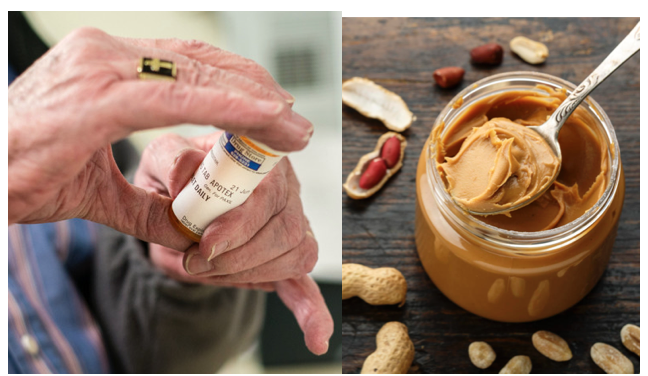CommentsHEALTHCARE ECONOMICS-What if purchasing medical products and services were like buying peanut butter? Grocery stores have several brands and varieties: smooth, chunky, old-fashioned, natural, organic, no added sugar, reduced fat, no-stir, and pre-mixed with jelly with clearly marked prices ranging from $1.75 for the store’s generic brand to $7 for the over-priced Yuppie brand.
After carefully examining the labels, our shopper chose a 16-ounce, $5 jar of no-added-sugar peanut butter. She paid the cashier $5 for the peanut butter and went home.
If our shoppers were transported to the universe of medical billing with the $5 jar of peanut butter, the shopper with Medicare would pay $1.00 but her grandchild will be presented with a bill for $4. When the shopper with private health insurance attempts to pay, the cashier becomes unglued. The shopper cannot say whether she met her deductible or has a co-payment, and whether the brand of peanut butter is approved by the network. She really wants the peanut butter, so she grabs the generic from the shelf and pays the $1.75. Our privately insured shopper was pleasantly surprised at the generic’s good taste and healthful ingredients, her wallet was happy for the cost savings, and she was glad not to have the middleman hassle.
Comparison shopping is one pillar of bringing sanity to the high cost of medical care, but the opacity of the pricing system for medical costs limits the value of posting list prices to encourage lower costs through shaming, competition, and choice. In addition to research and development, manufacturing, and distribution costs, drug costs are affected by additional layers of middlemen: pharmacy benefit managers (PBMs) and insurers. Using a “trade secret” process, PBMs negotiate discounts and rebates for private and government insurers. The money saved is supposed to go back to the government (taxpayers) or to insurers to lower premiums or otherwise benefit patients. PBMs typically are paid by a percentage of the rebate or discount off the list price. The higher the price, the bigger the rebate. Thus, the rebate system gives an incentive to raise list prices rather than placing the lowest-priced drug on the insurer’s formulary. (This same system is used by Group Purchasing Organizations (GPOs) for hospital product purchases.)
An analysis of the effect of California’s 2-year old drug price transparency law illustrates the complexity of pricing. Despite being compelled to post list prices, pharmaceutical companies raised the list price for wholesalers by a median of 25.8 percent, but the data did not indicate the “price” that consumers actually paid. Moreover, with medical services and products the simple What the Market Will Bear (WTMWB) pricing method works because either the medication is essential (e.g., Epi-Pen®), has no alternative, is in short supply, or the medical consumer is not paying directly for the services.
Similarly, publishing hospital the charge description master (“chargemaster”). i.e., the standard industry price does not give consumers enough information to make a rational choice regarding elective medical services. The data necessary to make price comparisons depends on an individual’s circumstances. More relevant than the chargemaster price, a self-pay patient needs to know the lowest possible cash price. A patient with health insurance must know (1) whether the hospital is in the insurance network, (2) the price negotiated between the health care provider and insurer (including Medicare), (3) the amount and method of calculating cost-sharing, (4) the amount Medicare or other insurer will pay for services performed in a physician’s office in contrast to the hospital which tags on a “facility fee.”
Transparency is one tool for lowering costs through choice. As one of many studies on hospital consolidation noted, “The Sky’s the Limit” on prices where there is lack of competition. But the difficulties of achieving useful price transparency must not be a cue for the government to initiate bureaucratic band-aids. As we have seen with Obamacare, forcing insurers to pay more of the costs leads to higher premiums, deductibles, and/or co-pays.
Nor should the government impose price caps. President Nixon’s 1971 wage and price freeze brought product shortages — which we are already facing with certain drugs, including anesthetics and chemotherapy agents. If the government sticks to enforcing anti-trust laws, a competitive market will thrive. The court house door anti-trust settlement by Northern California’s Sutter Health sends a message to big hospital chains to stop using their market share to inflate prices or require insurers to join their networks on an all-or-nothing basis to prevent insurers from negotiating lower prices at individual hospitals.
If we can get to the point of direct exchange of money for goods and services and reserve health insurance for major expenses, we can see costs decrease just as we have seen with the Surgery Center of Oklahoma over the last 10 years.
(Dr. Marilyn Singleton is a board-certified anesthesiologist and the immediate past President of the Association of American Physicians and Surgeons (AAPS). She graduated from Stanford and earned her MD at UCSF Medical School and her JD at UC Berkley Law School. She interned at the National Health Law Project and practiced insurance and health law. She teaches classes in the recognition of elder abuse and constitutional law for non-lawyers. This piece first appeared on The Conservative Pundit.) Prepped for CityWatch by Linda Abrams.
















